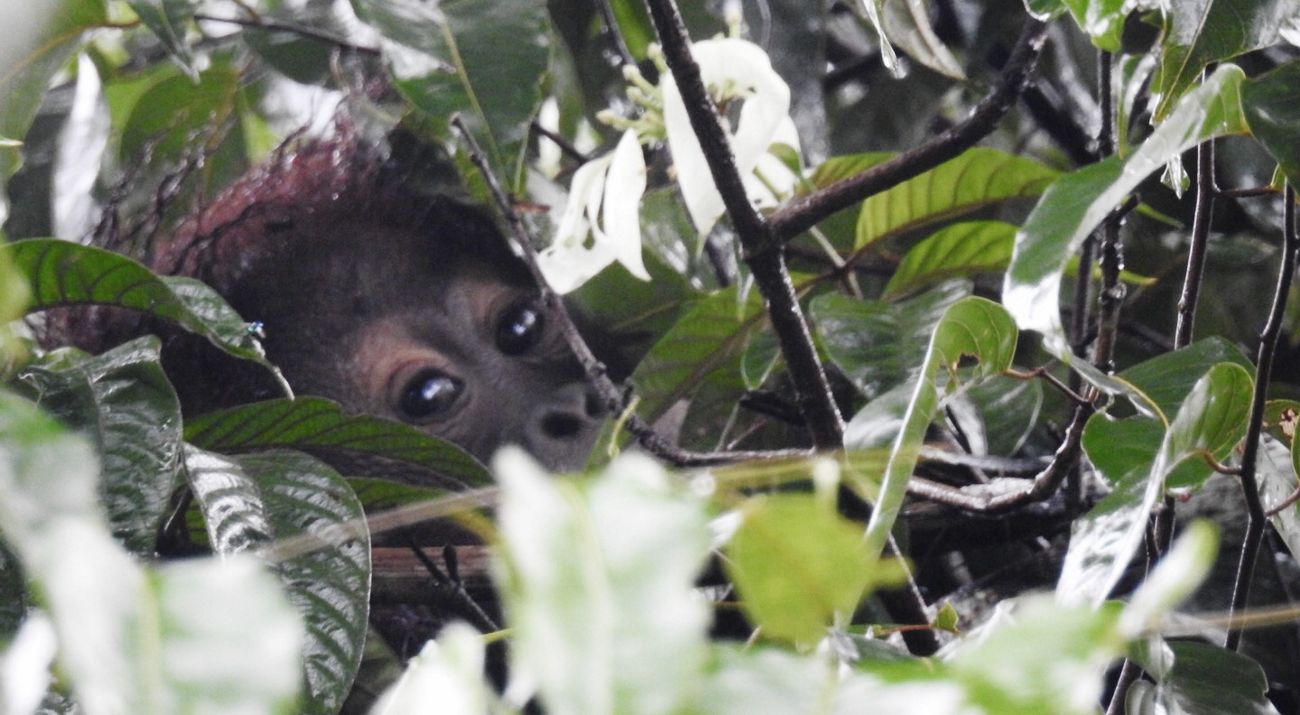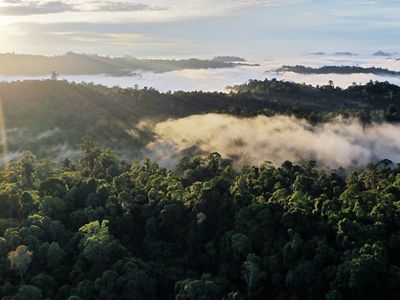
This story is part of Matt Miller's; "Stories from the Kalimantan Forest" (link), which chronicles his journey with YKAN and its partners, TNC and Arhaus, in January 2025, deep in the forests of East Kalimantan.
Read: Preserving the Bird's Head Seascape through Coral Reef Monitoring
How curious was it to meet the famous orangutan? The story is exciting.

We’re beginning our tour at this national park, which hosts one of East Kalimantan’s largest orangutan populations. As our group watches monkeys, one of our guides, a fit man in his 20s wearing shorts and sandals, motions me over; an orangutan has been spotted nearby. A minute later, he waves us to head down the forest trail. The group takes off at a trot. I am constantly scrambling to keep pace. A guide up ahead signals he has spotted an orangutan. Our pace quickens and we head off trail.
I slip on mud, trip over roots. Indonesia’s forests are around 140 million years old—the second-oldest tropical forests on Earth. They’re a biodiversity hot spot, home to not only orangutans but also a diversity of primates and other rainforest mammals. They’re also under enormous threat. According to David Gaveau, founder of The TreeMap and Nusantara Atlas—an organization that compares historical and modern satellite data to track deforestation—Indonesian Borneo lost 11 million acres of old-growth forest between 2001 and 2023, with additional acres destroyed each year.
My quick-dry pants shred on thorns from the undergrowth. We pad through the forest, listening as the guides softly hoot back and forth to each other. We are getting close.
We approach a large tree, and Priscilla Christin, YKAN’s communications director, points to a branch 50 feet above and whispers, “It’s up there.”
I look, and … there. An arm. A long, red, very hairy arm reaches out and plucks something off a branch. I pull my binoculars to my eyes to focus on a large male orangutan. We catch a longer view as he swings through the trees.
The orangutan doesn’t reciprocate our awe. After a few minutes, he starts dropping branches on us. This appears to be more an act of annoyance than rage. He continues his routine, moving through the trees and plucking fruits. The guides smile at each other. They know the orangutans here, and this one has a reputation for being grumpy. I find the animal amazing: Despite its large size, it moves nonchalantly through the trees.

When we hear thunder, the guides signal that it’s time for us to return to the main camp. I take a moment for one last look. The orangutan’s arm extends out and chucks a particularly large branch. It lands with a thud, eliciting low chuckles from our group. The orangutan looks down, showing his bowl-shaped face.
Then there’s more thunder, now closer, and drops of rain. The orangutan swings through the trees. We’re going to get soaked. It’s time to head back.




